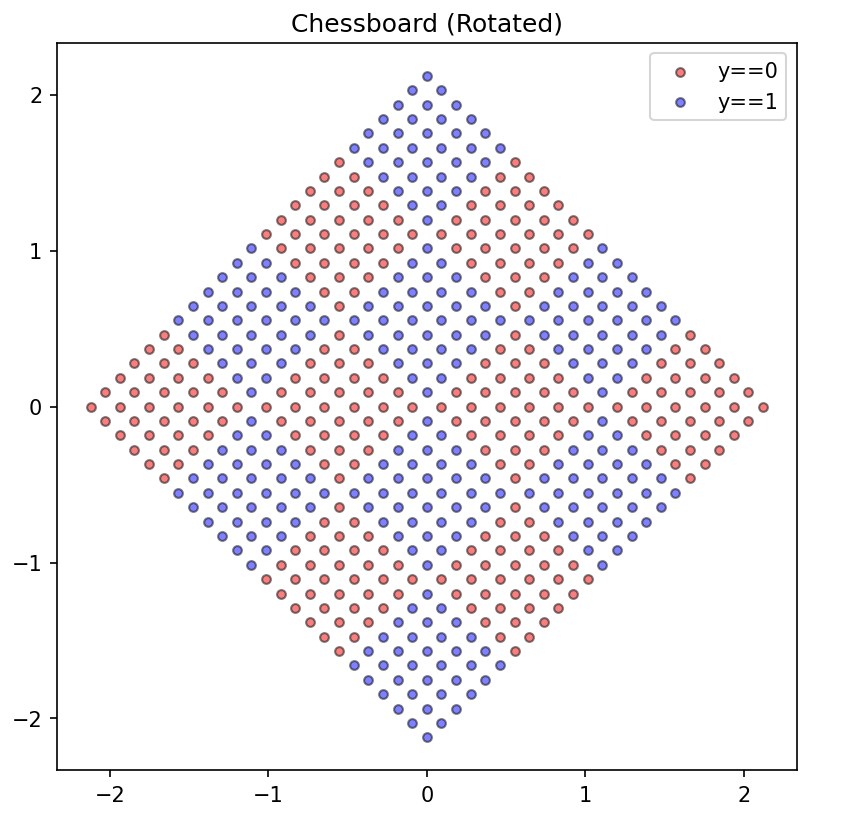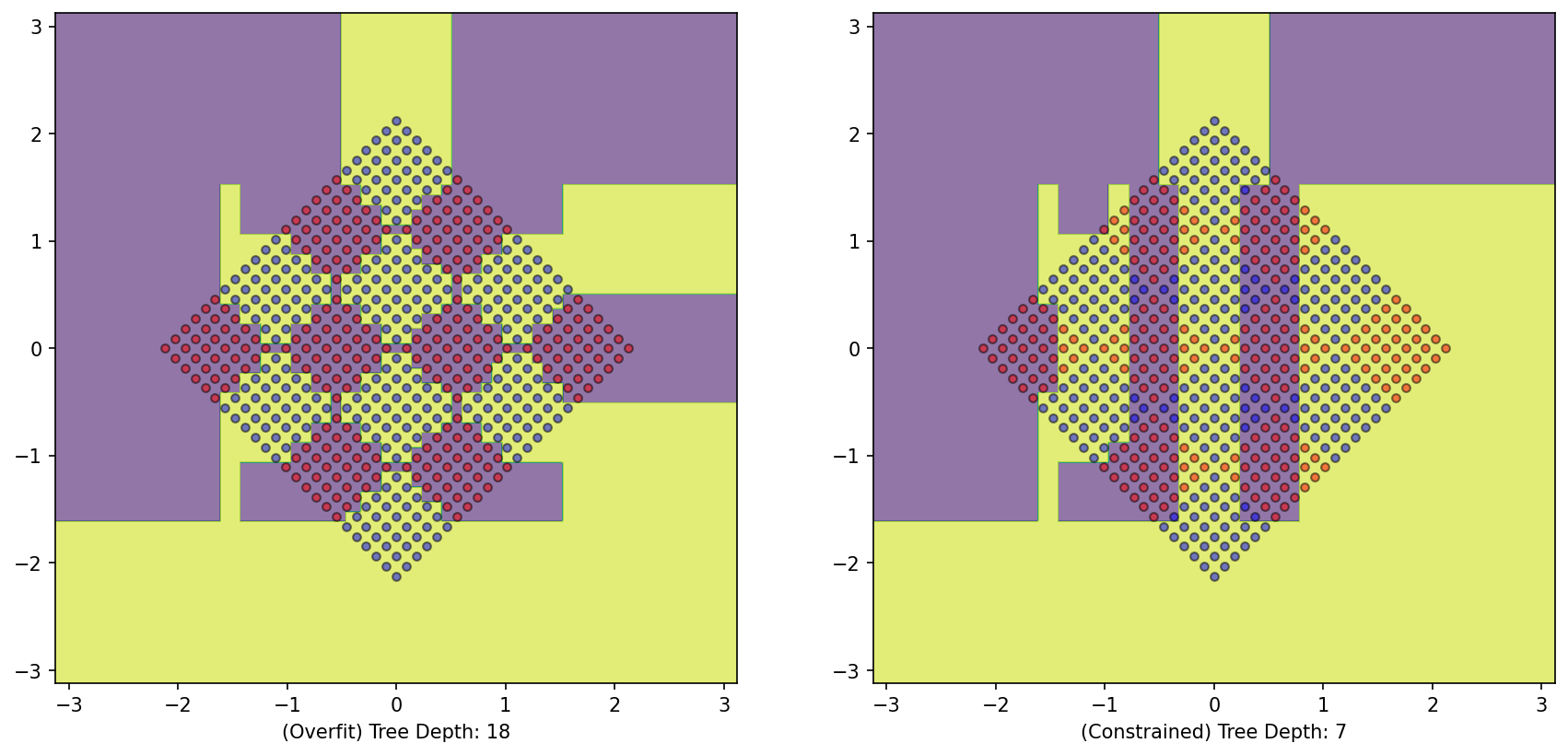Decision Trees
- Popular representation for interpretable classifiers; even among humans!
- Example: I’ve just arrived at a restaurant. Should I stay (wait for a table) or go elsewhere?
One may choose to use the following set of rules to make their decision:

Consider this dataset:
- 4x4 checkerboard dataset with alternating classes
- Red points \(\implies y=0\)
- Blue points \(\implies y=1\)
- Want to model dataset generation rationale
Fit a Decision tree?

The following decision tree is achieved:

Rationale is perfectly captured by a decision tree with depth=7
A twist
(literally)
Consider this dataset:
- Previous dataset, rotated by \(45^{\circ}\) from the origin
- How will our decision tree algorithm perform on this dataset?


- A complicated decision tree with 18 questions is required
- Note that the depth is not constrained
- Number of corners \(\propto\) density of class
- Unconstrained - Overfitting
depth=7found sufficient to capture structure of dataset- But performance is not invariant to transformation by rotation
Why?
Decision trees make the following presumption about the structure of data:
Can figure class out based on a series of binary questions (yes/no) on individual features
Inductive Bias: Anything which makes an algorithm learn one pattern over another
- Inductive bias of decision trees entails the use of axis-parallel splits to construct the decision boundary
- Sensitive to rotations
- Algorithm invariant to rotation?
K-Nearest Neighbors
- Lazy Human; do not want to learn anything
- Predict on input \(\mathbb{x}\) as follows:
- Find others who are in a similar situation as \(\mathbb{x}\)
- Choose the top \(K\) people w.r.t similarity
- Have them vote on the prediction
In our dataset, we define similarity to be inveresely proportional to the distance between datapoints; i.e
The closer the datapoints, the more similar they are
The following decision boundaries are achieved by the KNN algorithm:

- Rotation has no impact on the decision boundary of KNN!
- Inductive bias for KNN?
Consider the following dataset:

- The dataset is linearly seperable
- Blue points \(\implies\) Class 1, and Red points \(\implies\) Class 2
- Note that the range (and therefore scaling) is vastly different for Features 1 & 2
KNN Results in the following decision boundary:

- Distance is invariant to scaling of features
- Feature 2 is totally neglected during prediction
- Apply StandardScalar?

- KNN has satisfactory performance; but we raise some questions:
- Is a StandardScalar transformation advisable?
- Dataset is given to be linearly seperable; Can we do better?